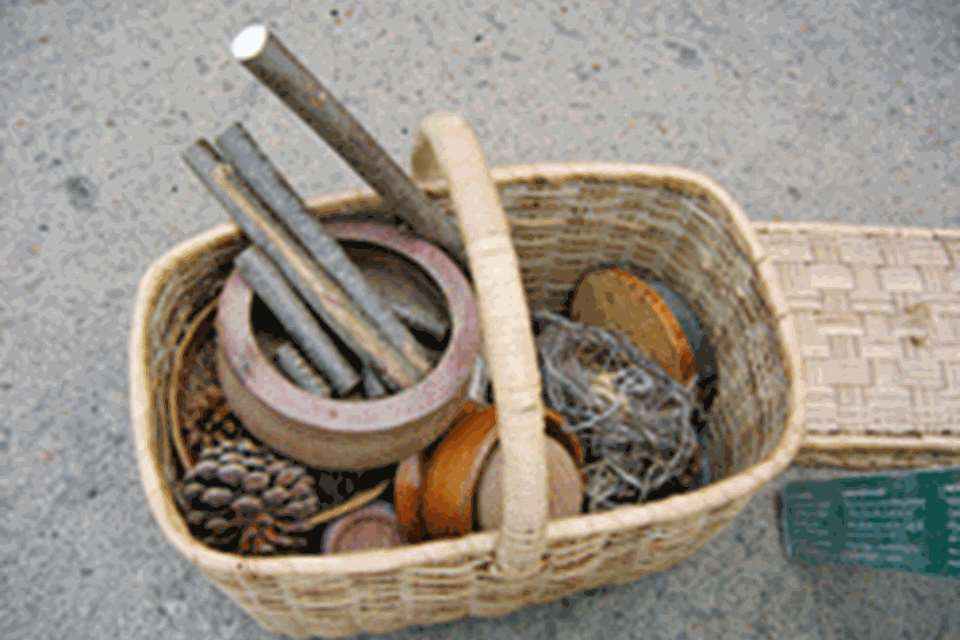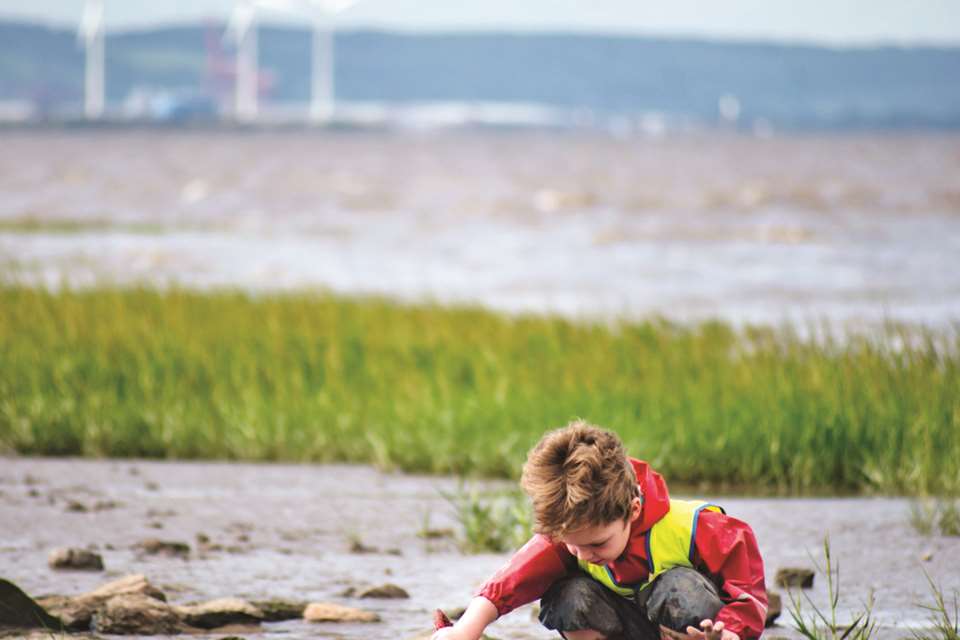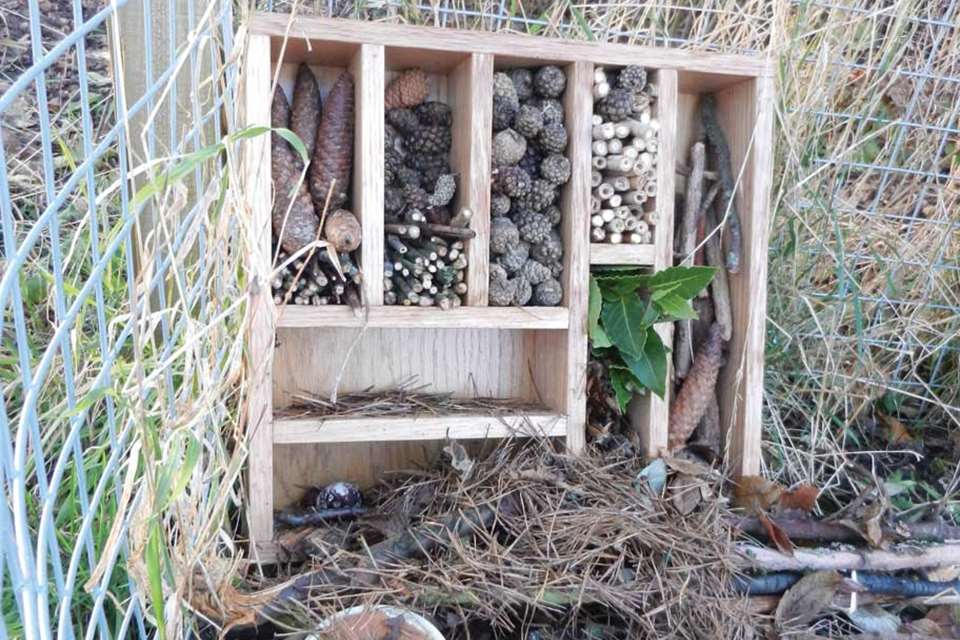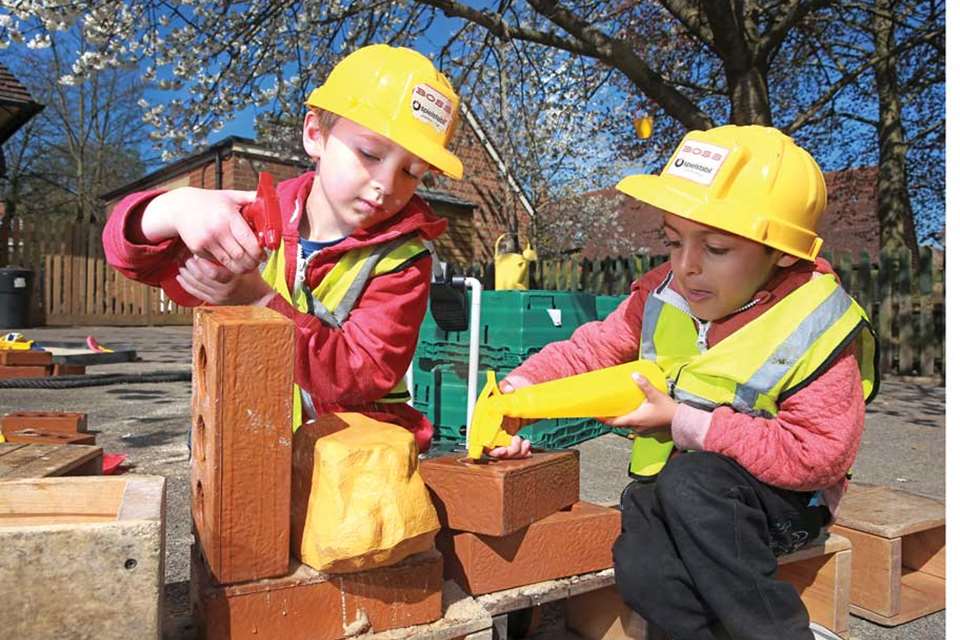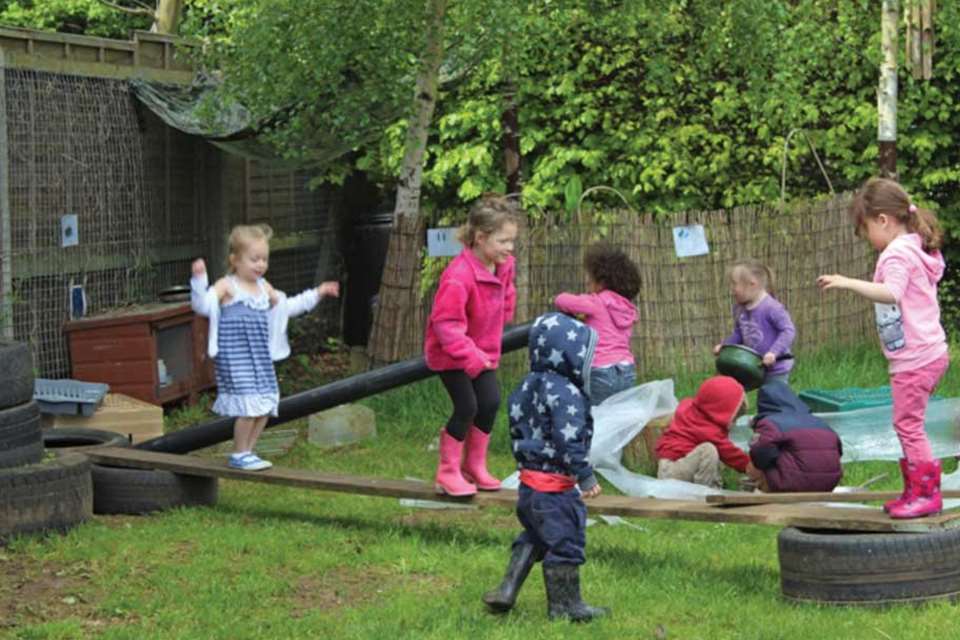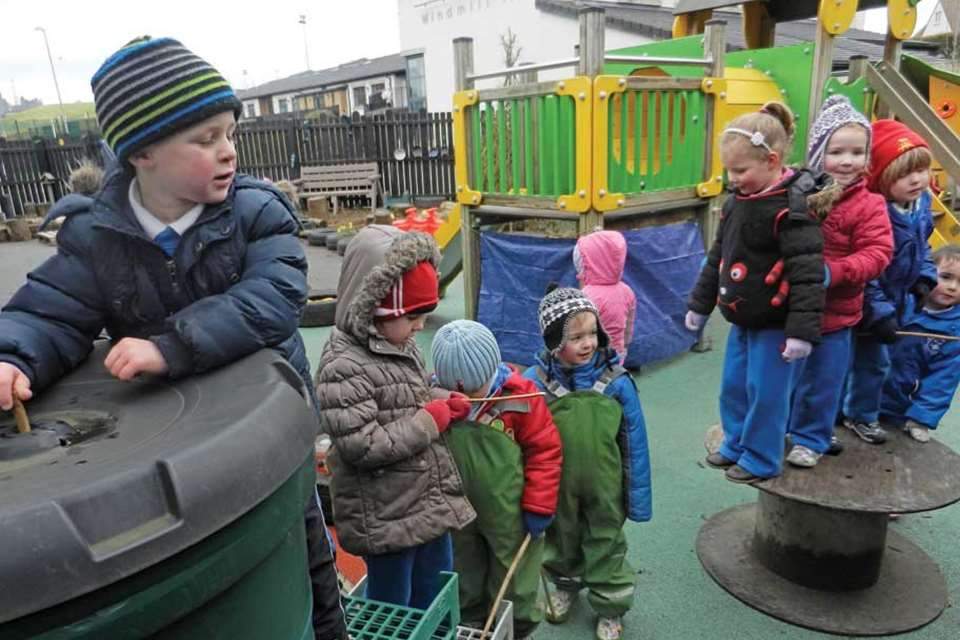Enabling Environments: Outdoors - Beg, steal or borrow?
Julie Mountain
Monday, November 17, 2014
'Free-and-found' resources lend themselves to creative, child-directed outdoor play. Julie Mountain offers some guidance on sourcing them.
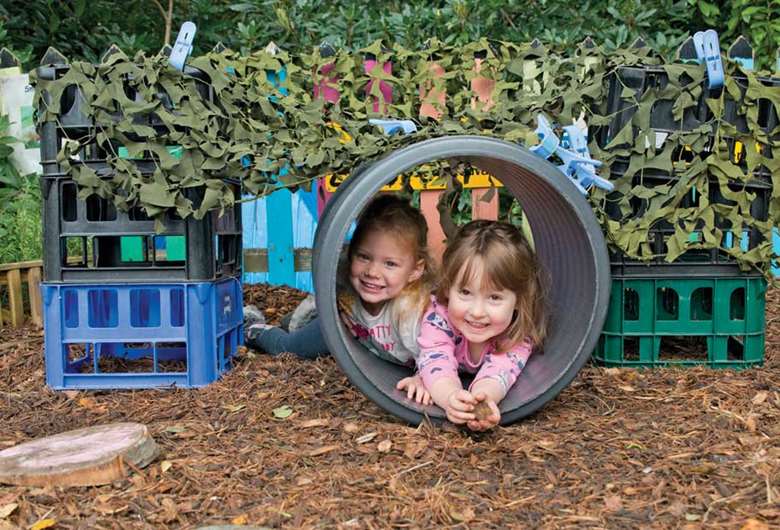
Innovation and frugality: two words frequently associated with early years practitioners. As budgets become tighter, the need for creative resourcing becomes ever more urgent, so now is a great time to discover exciting outdoor play resources in the most unexpected places: skips, tips, attics and jumble sales.
The term 'free-and-found resources' is in common use, but it is worth just clarifying what we mean. Free and found refers to play resources that are donated, as well as found items - for example conkers, pine cones or shells. It also means scavenged objects from tips or bins. And for me, it also encapsulates objects bought for pennies, perhaps in a charity shop, jumble sale or pound shop.
Free-and-found resources are rich in 'affordances'. Affordance theory, first suggested by psychologist James J Gibson in the 1970s, has been adopted and adapted by early years practitioners and designers working within the sector to examine how children make sense of their environment and to help create spaces and places that 'afford' diverse and compelling play opportunities.
Gibson believed that good design should make affordances explicit - in other words, the purpose of an object (or place) ought to be obvious. In early years and playwork, the opposite is often true: in a rich play environment, children are able to shape and adapt features to suit their own needs; it is a place in which objects and spaces have a multitude of possible uses. The affordances are still explicit, though - it is just that they are probably different for each child.
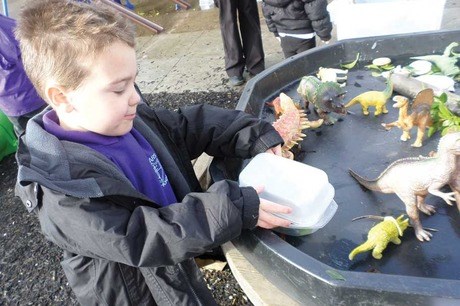
By their very nature, free-and-found resources are usually objects that were not designed for play. It is unlikely that John Dunlop or Charles Goodyear had any idea that one day the results of their inventions, which led to the creation of the tyre, would be a common sight in playgrounds.
Practitioners and children, however, are able to see and act on the possibilities - the affordances - of rubber tyres and a myriad of other free-and-found objects.
In general, free-and-found resources are also classified as 'loose parts' resources. You can read much more about Simon Nicholson's loose parts theory on the Nursery World website (see information column, right), but to summarise:
- Loose parts, particularly in abundance, allow children to continuously reflect on and generate their own play environments and scenarios.
- These loose parts are often, but not always, natural materials such as logs, sand, water, stones or sticks.
- Loose parts have multiple affordances and lend themselves to creative, expressive and child-directed play.
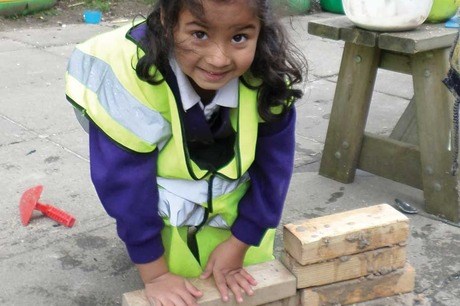
SOURCING OBJECTS
When seeking free-and-found objects, it is important to explain the purpose of your request to potential donors. Talk about the benefits that children will gain from their creative reuse of the donations and reassure donors that responsibility for assessing the risk posed by the objects during play lies entirely with the setting, not the donor. In order not to miss the opportunity to acquire everyday treasure:
- never walk past a skip without peering into it
- collect natural materials from parks, the countryside and parents' gardens
- make a list of items you would like, send it out to parents and ask them to donate when they can
- make regular visits to your local scrapstore - stock changes frequently so be sure to visit often
- become friends with local businesses - for example builders' merchants, interior decorators, wood yards and farmers - and get to know the staff at your local recycling depot or amenity tip
- review your existing play resources and ask if any of them could be relocated and used more creatively outdoors.
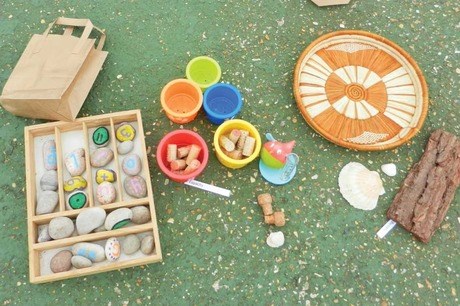
GOLDEN RULES
As with any play resource, responsibility for ensuring free-and-found objects are safe to use, and are then used safely, remains with your setting.
- Always ask permission from a skip, tip, bin or landowner before scavenging from their property. If you can't find them, pop a note through their door and come back another time.
- When in the park or the countryside, scavenge flowers, conkers, pine cones and other natural resources from the ground. Pick only if you have express permission to do so.
- When accepting donated objects, try to imagine how children might use them and ensure the donations are robust enough to be fit for purpose.
Carry out risk benefit assessments on each free-and-found resource, taking into consideration: how the objects might be used; the likely benefits children will gain from using the items; the possible hazards and the likelihood and severity of these hazards; how you can mitigate the hazards.
- Ensure lengths of rope are always used with close adult supervision and stored securely when not in use.
- Check the condition of all play resources regularly, and plan for replenishment. Items such as sticks and cardboard will need regular replenishment; tree trunks will hopefully last a bit longer.
- Avoid sharp or brittle items (make sure you sand or plane timber offcuts where possible) and work alongside children to agree safe ways to play with and store free-and-found resources.
FINDING TREASURE
Like beauty, free-and-found treasure is in the eye of the beholder. Here are some examples.
Natural resources
- long straight sticks
- lengths of wood
- gravel and pebbles
- conkers and cones
- hay and straw
- small sticks and twigs
- slices of tree trunk
- shells
- clay and natural chalk.
Wheeled
- wheels and castors
- tyres
- old pushchair/wheelchair/skateboard/snowboard.
Household
- CD player and CDs
- duvet covers, sheets and blankets
- bubble wrap
- cardboard
- wallpaper samples
- wine or shoe racks
- 2-litre drinks bottles with caps
- plastic bottle tops
- crates
- washing airer
- storage containers
- wooden picture frames
- stainless steel kitchen equipment and utensils
- fabric swatch books
- string, bungee cords, twine, wool
Garden/outdoors
- gutters and plastic piping
- trugs, tubs, barrels and buckets
- plastic and terracotta pots of every size
- golf balls/tennis balls
- cargo net
- tarpaulins
In addition, it is useful to have a selection of 'connectors' to help children maximise the value of free-and-found construction play. Most of these items can also be scavenged, donated or found elsewhere in your setting.
Connectors include:
- karabiners
- pegs
- shower curtain rings
- elastic
- bag clips
- Velcro ties
- masking tape
- duct tape
- 'twist tie' soft-coated garden wire
- men's neckties
- ribbon.
FREE-AND-FOUND FUN
Ideas for using free-and-found materials are plentiful, but the joy of 'upcycling' will be in observing children using these objects in unusual and unexpected ways. As a springboard to stimulating and inventive play, you might like to think about:
- offering construction play with sticks, fabric, planks, plant pots and crates
- exploring pattern, scale, number and shape using sticks, coloured bottle tops, ribbons and pebbles
- allowing children to make up their own stories - or retell favourite stories - using separated and laminated pages of tatty storybooks you are about to replace
- making face paints, fabric dyes and cotton prints with squashed blackberries, lush grass and flowers
- creating mini allotments using scavenged containers such as sinks, wellington boots or wheelbarrows
- creating themed collections of resources - for example, the tip, charity shop and car boot sales are great sources of shiny and silvery objects such as pots, dishes, toast racks, Christmas baubles and so on. How children use these will depend on the affordances they see in them.
READER OFFER
The Little Book of Free and Found by Julie Mountain (Bloomsbury, £8.99) gives practitioners the confidence to get out there and source free resources to enrich their early years provision. Guidance is provided on choosing resources, risk assessing their use, and encouraging children's creative use of the objects. Nursery World readers can receive a 20 per cent discount on the book by using the code FOUND14 at http://bloomsbury.com. The code is valid until 31 December 2014.
MORE INFORMATION
- An internet search for 'theory of loose parts' will bring up pages of links, including Simon Nicholson's original article.
- 'On the loose' by Nicole Weinstein explores 'loose parts' and Simon Nicholson's work, www.nurseryworld.co.uk/nursery-world/feature/1144125/ enabling-environments-collections-loose
- 'Outdoors - wild at heart' by Claire Warden explores affordances in more detail, www.nurseryworld.co.uk/nursery-world/feature/1094894/ enabling-environments-outdoors-wild-heart.


